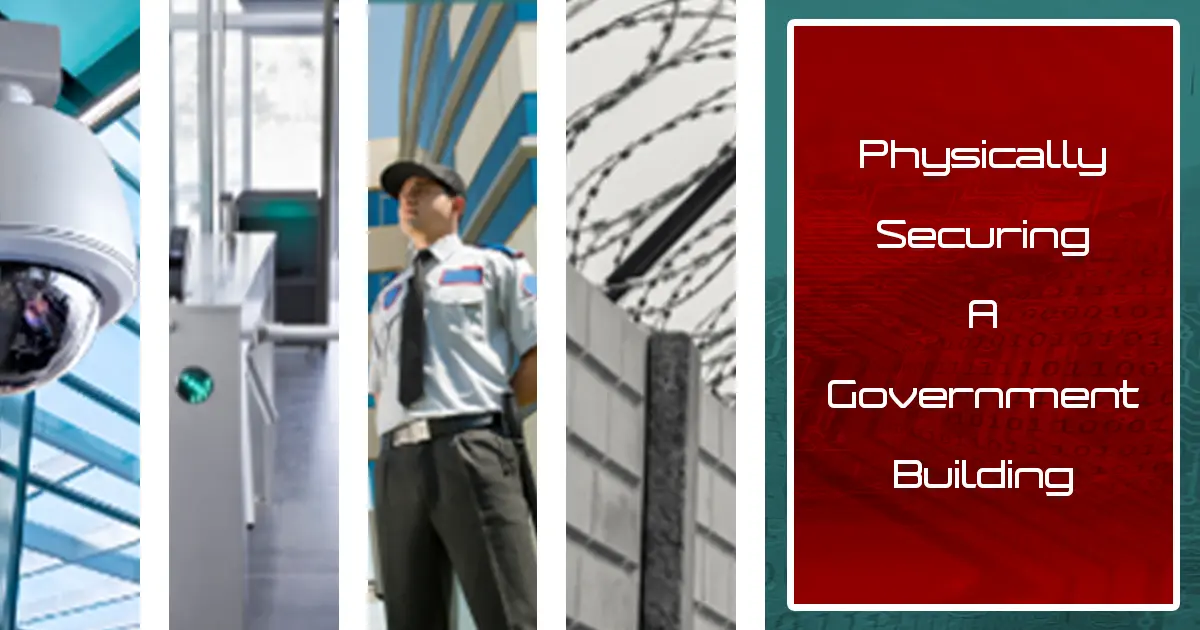Physical Security in Government Buildings, in the dynamic landscape of threats, it’s imperative that physical security measures in government buildings evolve correspondingly. Regular reviews and updates of security protocols are essential to mitigate new vulnerabilities and combat emerging threats effectively.
Integration of Security Systems
Integrating security systems within government buildings is a pivotal strategy that transcends mere implementation; it’s the cornerstone of ensuring comprehensive physical security in government buildings. This holistic approach not only facilitates the amalgamation of surveillance cameras, access control systems, alarm systems, and emergency response protocols into a unified, efficient network but also significantly amplifies the capability to monitor and manage security threats dynamically. The fusion of these components within the framework of physical security in government buildings enhances the operational efficacy, enabling security personnel to have a 360-degree view of the security landscape in real-time. This integration is pivotal in automating and streamlining responses to various threats, effectively reducing response times and optimizing overall security operations.
The role of advanced technologies such as AI and machine learning in bolstering the integration of security systems within government buildings cannot be overstated. By analyzing vast arrays of data to identify unusual patterns or anomalies, these technologies play a crucial role in preemptively identifying potential security threats. This proactivity ensures that physical security in government buildings is not just reactive but anticipatory, adapting to potential threats before they materialize.
Enhancement of Secure Communication Systems
The essence of physical security in government buildings is profoundly reinforced through the enhancement of secure communication systems. In today’s nuanced threat environment, the deployment of encrypted communication channels is paramount. Whether it’s voice, text, or data transmission, the application of end-to-end encryption safeguards the integrity and confidentiality of operational communications. This security measure is indispensable in maintaining a veil of secrecy over sensitive information, thereby preventing unauthorized access or interception. In emergencies, the robustness of these communication systems becomes the lifeline of crisis management, facilitating seamless, coordinated responses that are essential for the effective resolution of security incidents.
To further fortify the physical security in government buildings, redundancy and fail-safes within communication systems are integral. These measures ensure that even in the face of compromised primary systems, there is no breakdown in communication, thereby maintaining an unbroken chain of command and control. This level of preparedness and resilience is vital in mitigating the impact of sophisticated threats, showcasing a deep commitment to safeguarding not just the physical infrastructure but also the people within government buildings.
The integration of security systems and the enhancement of secure communication systems are fundamental to advancing physical security in government buildings. By leveraging cutting-edge technologies and ensuring robust, secure communication pathways, government buildings can achieve a state of preparedness and resilience that is essential in today’s complex security landscape.
Physical Security in Government Buildings: Physical Barriers
The deployment of physical barriers is a testament to the adage “prevention is better than cure.” Bollards, reinforced walls, and blast-resistant windows serve as the first line of defense against direct physical threats. Bollards, strategically placed around the perimeter or key access points, can prevent vehicle-based attacks, including ramming and car bombings. Reinforced walls and structures offer resilience against forced entry and ballistic attacks, ensuring that the integrity of the building’s perimeter is maintained even under assault. Blast-resistant windows are designed to withstand explosions, significantly reducing the risk of injury to occupants and damage to sensitive infrastructure. These physical deterrents not only provide tangible security benefits but also convey a strong message of deterrence, making it clear that the facility is well-protected and resilient against a range of threats.
Regular Security Drills
Regular security drills are a cornerstone of an effective security strategy for government buildings, going beyond mere compliance to embedding a culture of readiness and resilience. These drills should simulate a range of threat scenarios, from active shooter situations to natural disasters, allowing both security personnel and staff to practice their roles within emergency protocols. The objectives of these exercises include identifying weaknesses in emergency plans, improving coordination between different response teams, and reducing response times to threats. Incorporating feedback and lessons learned from these drills into the security planning process ensures continuous improvement and adaptation to new or evolving threats. To enhance the realism and effectiveness of these drills, government buildings may employ the use of technology, such as virtual reality simulations, which can provide more immersive training experiences without the logistical challenges of full-scale physical drills.
Collaboration with Local Law Enforcement
The collaboration between government buildings and local law enforcement is a symbiotic relationship that strengthens the overall security posture. This partnership can take many forms, including the sharing of threat intelligence, joint security assessments, and collaborative emergency response planning. By involving local law enforcement in security drills, both parties can develop a deeper understanding of each other’s capabilities and limitations, fostering a more coordinated response during real incidents. Moreover, regular meetings and information-sharing protocols can ensure that both sides are up-to-date on the latest security threats and best practices. This collaborative approach not only enhances the security of government buildings but also contributes to the safety of the broader community by promoting a unified security front.
Physical Security in Government Buildings: Cybersecurity Integration
In today’s interconnected world, the security of physical infrastructures is intrinsically linked to cybersecurity. The integration of cybersecurity measures into the security framework of government buildings addresses the hybrid nature of modern threats, which often span both physical and digital realms. This includes securing access to physical security systems, such as surveillance cameras and access controls, from cyber-attacks, as well as ensuring the security of sensitive information stored within these facilities. Cybersecurity practices for government buildings should include regular risk assessments, the implementation of multi-factor authentication, encryption of sensitive data, and employee training on cyber hygiene practices. The goal is to create a security culture that recognizes the interdependence of physical and digital security measures.
As highlighted by Smith (2022), Physical Security in Government Buildings is a comprehensive endeavor that requires not just advanced technologies but also a proactive and collaborative approach to security management. By focusing on regular security drills, collaboration with law enforcement, and cybersecurity integration, government buildings can create a robust security ecosystem capable of protecting against and responding to a wide array of threats.
References:
- Cybersecurity & Infrastructure Security Agency. (n.d.). Interagency Security Committee policies, standards, best practices, guidance documents, and white papers. Retrieved from https://www.cisa.gov/isc-policies-standards-best-practices-guidance-documents-and-white-papers
- U.S. Department of Commerce. (n.d.). Physical security. Retrieved from https://www.commerce.gov/osy/programs/physical-security
- U.S. Government Accountability Office. (2018, December 20). Federal building security: Actions needed to help achieve vision for secure, interoperable physical access control (GAO-19-138). Retrieved from https://www.gao.gov/products/gao
Physical Security in Government Buildings – To Learn More:
Physical Security in Residential Complexes: Essential Strategies for Safeguarding Your Community
Enhance Protection: Ultimate Guide to School Campus Security





Pingback: Maximizing School Campus Security: A Comprehensive Guide for Safer Educational Environments - Grab The Axe